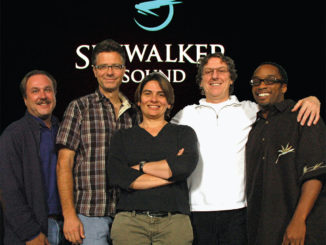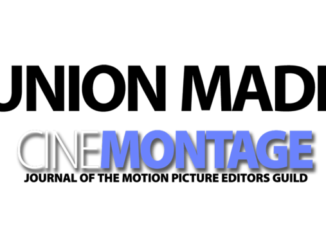
by Mel Lambert • portraits by Martin Cohen
Scheduled to unveil on September 2 in its 10-episode entirety, Season 2 of Netflix’s hit series Narcos is expected to prove as popular as the initial offering — and probably will be viewed in extended binge-watching sessions, if previous experience is any indicator. Apparently, post-production sound work on the series proved no less a marathon.
“From the time I started in February, the schedule was quite demanding,” concedes supervising sound editor Randle Akerson, MPSE. “At one point we were mixing two episodes back to back! And as we got closer to our July finish, we saw later turnovers with more changes and actors who became unavailable.”
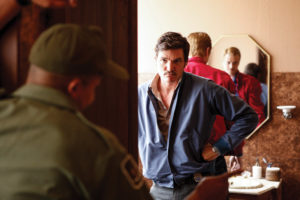
Created and executive produced by Chris Brancato, Carlo Bernard and Doug Miro as a partnership between Netflix and Spanish-language network Telemundo, Narcos tells the story of former drug kingpin Pablo Escobar who, during the late-1980s and 1990s, became a billionaire through the production and distribution of cocaine. The raw, gritty series also focuses on Escobar’s interactions with drug lords, Drug Enforcement Administration agents and various oppositions. Set and filmed in Colombia, the series stars Wagner Moura as Escobar, with Boyd Holbrook and Pedro Pascal as DEA agents Steve Murphy and Javier Peña, respectively, and Maurice Compte as police chief Horacio Carrillo.
In addition to Akerson, the Narcos sound crew comprised ADR supervisor Thomas Whiting, dialogue editor David Padilla, sound effects editor Dino DiMuro, MPSE, dialogue/music re-recording mixer Pete Elia, CAS, sound effects re-recording mixer Kevin Roache, CAS, and recordist/mix technician Jared Orlando. The primary sound editors were based at Technicolor Burbank in the former Miles of Fun/Weddington Productions facility, with Elia and Roache manning the re-recording console at Technicolor at Paramount’s Stage 7 in Hollywood. Foley mixer Eric Culp and Foley artist Steve Hammond plied their craft at Technicolor’s Toronto facility. ADR supervisor Gaston Biraben also worked on the last two episodes of Season 2.
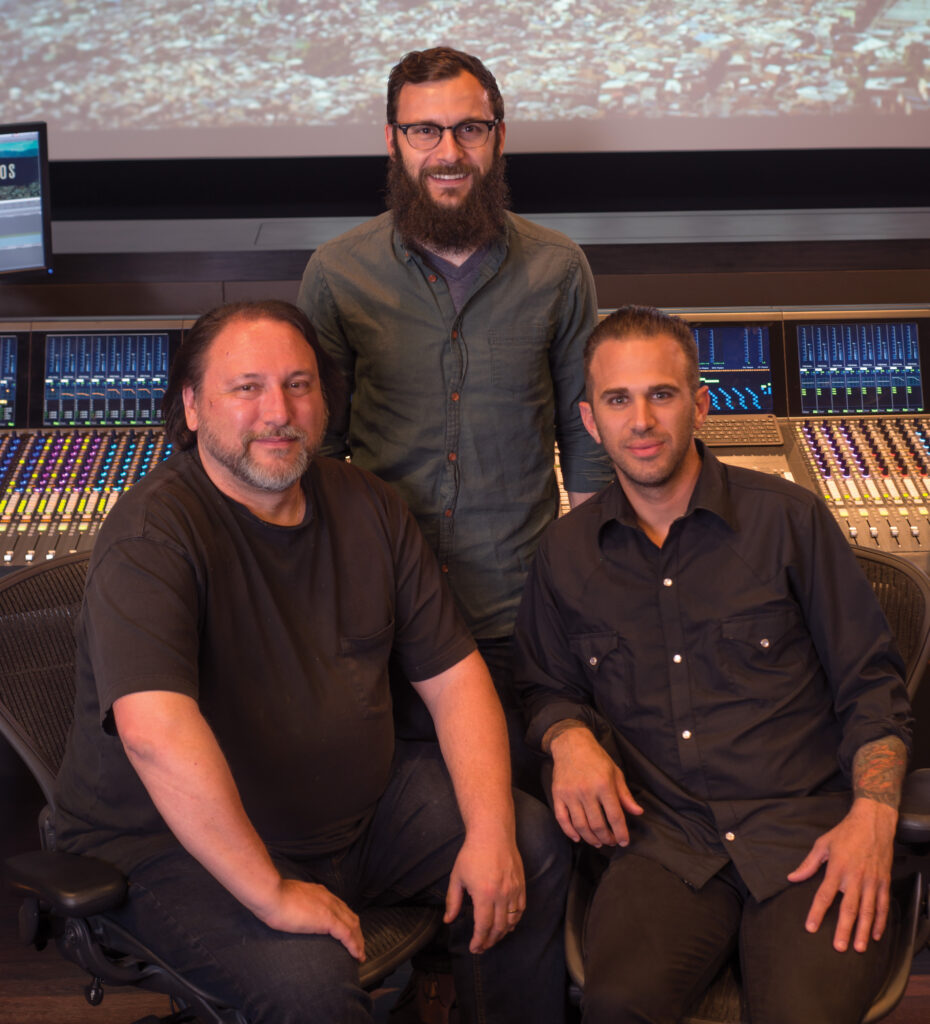
“My first substantive discussions of sound for the show came during the first spotting session with producer Tim King, lead picture editor Matt Colonna and Tim’s son Tanner King, our post-production coordinator,” says Akerson. “Because the show is a real-life action drama, and is intermingled with real news footage from the time, it was important to capture a realistic 1992 Colombia. The producers wanted busy, chaotic, gritty atmospheres for the Medellín barrios; Dino had done a great job putting that together. But as the episodes progressed, they were also asking us to create weird and sometimes even dreamlike atmospheres for the rural fincas [Spanish for large farms or plantations] and rain forests, giving us some opportunities for nice contrasts. And of course, they also wanted awesome — but realistic — action scenes with guns, bombs, trucks and the whole works. Dino has done a great job with all of that.”
Realistic Colombian Dialects and Period Sound Effects
As with Season 1 (which recently received three Emmy nominations, including one for picture editor Leo Trombetta, ACE), the showrunners stressed that the dialogue and group ADR should be as realistic as possible, while maintaining authentic Colombian Spanish dialects for some of the non-Colombian actors. “There was a lot of discussion about the correct colloquialisms in the ADR,” Akerson emphasizes, “even in the production dialogue, where sometimes the picture editors cheated words with better pronunciations.”
“When Randy first contacted me about Narcos, I could tell he was really excited about the challenge of working on a series set in Colombia,” recalls Whiting. “He explained that I would be transcribing and translating dialogue, as well as directing actors in Spanish. This really attracted me to the project because I’ve had a passion for languages — especially Spanish and French — since I was 14 years old. Also, my wife is Cuban, so Spanish is a constant part of my life. During the course of the season, Randy and I attended all spotting sessions; we got a sense of what our focus should be on each episode, as well as any particular effects and added lines that were required. A lot of thought went into group ADR.
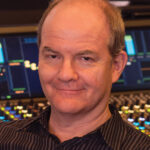



“Every episode of Narcos contains many Colombian idioms and accents used in different regions of the country,” the ADR supervisor continues. “Narcotraficantes and police also have their own particular lexicon. For example, when we were unsure of what a police officer would say in a particular scene, I asked the ADR mixer Manuel J. Gordillo, who works at La Tina Sonido in Bogotá, about the scene minutes before the session started, he actually ran down the street to the police station and asked the officers what they would say!”
“Randy was really specific,” Padilla confirms. “First and foremost, quality and precision in the work we were doing was very important; dialogue needed to be able to be understood and clear, which was a challenge in itself given the intense level of background noise happening at each location in Colombia. It was also important to Randy that we learned the characters and followed his notes, which were very much our guiding roadmap in terms of what to do and how best to implement the work.
“After the spotting session, it was about collaboration,” adds the dialogue editor. “We determined what was needed for each episode. Those notes were put forward and ADR was captured. Sometimes things were caught in the session, but sometimes elements were added over the course of different versions of each episode. Tom spearheaded that process and disseminated all the information from the sessions with Randy.”
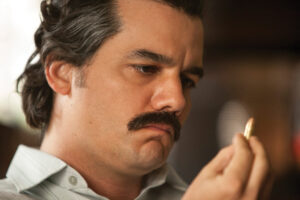
Padilla’s ability to speak Spanish — and his appreciation of Colombian idioms — proved very useful for such a dialogue-driven, one-hour drama, which adds to the soundtrack’s realism and credibility for Spanish-speaking audiences. “Yes, Narcos is very much a dialogue-driven drama,” he acknowledges, “but what’s special about the series is that it’s heavily bilingual. There are many dialects to Spanish, and the series has quite a bit of slang and street usages, which are critical to the writing of the show. It was important that the script be respected and, ultimately, that the edit be reflective of the writers’ intentions.
“That’s challenging from a sound editing point of view, since you are mentally switching back and forth between languages,” Padilla continues. “But also because there are some specific tones and syllables to each language and phrases that we needed to capture appropriately and accurately. I’m lucky to be able to speak Spanish as a second language, which made the editing for the series move along more swiftly.”
With around 90 percent of the ADR performed in Colombia, and production working on several stages in different countries during the filming of any given episode, “keeping track of current picture versions and following up on delivery of digital material was a big challenge,” Whiting affirms. “We were fortunate to have sound assistants Nick Papalia and Jonathan Corona at Technicolor to see to all the details. In fact, they were in constant communication with the stage in Bogotá through a WhatsApp group. When working on such a busy show, it’s always reassuring to know someone is making sure nothing falls through the cracks.”
Padilla combed through the assembly and often uncovered problem areas that had to be looped, according to Whiting. “David was great at building his tracks so that we could insert ADR in scenes with heavily overlapping dialogue,” he says. “We couldn’t always loop every actor in a scene, and it really helped when he carved out the necessary space for ADR. David’s fluency in Spanish made this possible.”
“In terms of sound effects, we intentionally stayed away from some of the action-movie sound tropes — like cut sweeteners, for instance — and just went for intense realism,” Akerson explains. “The Narcos sound universe is made up of very big and very small moments,” confirms DiMuro. “The big moments are obvious: gunfire, explosions, killings, speeding vehicles, etc. But for me, the smaller moments are every bit as important — and that’s where I feel the most creative. What does Escobar’s bathroom sound like? There’s a hole in the window, so is wind whistling through? Is the toilet running and are the pipes moaning? When he takes an extra-long hit on a joint, the sound must reflect that as well. Are his doors heavy and secure, or weak and squeaky?”
Any time the scene moved from bigger events to smaller spaces, Akerson tried to find a sound to set it apart. “In the communications room, a tape recorder had a lazy scrape from an unbalanced reel,” he explains. “Hamburger patties hit the grill with an angry hiss. Another signifier of smaller events I used were the sounds of tiny bells; these had been heard during a drug raid or as bodies were discovered hanging in a public square. While they didn’t make literal sense, they deepened the horror of what we see through counterpoint.”
Early in production, it was established that the Narcos universe was one of congested streets, honking circa-1980s cars, motorbikes and street wallas —“the busier the better,” DiMuro recalls. “Unfortunately, spotted effects are among the most time-consuming, especially when you have a show made up of several set pieces like gun battles or car chases. Obviously, the actions that are in your face must be finished first.
“Since Narcos is mostly a library effects show, it helps that we had access to the incredible Soundelux library recently purchased by SoundDogs and leased by Technicolor,” the sound effects editor continues. “When design was called for, it was generally created by the subtle manipulation of real sounds as opposed to stingers or whooshes.”



Mixing en Español
“The strength of the Narcos soundtrack is that it captures, almost in a pseudo-vérité style, the feeling of the characters’ reality, environments and stressors,” stresses mixer Elia. “So, instead of a perfectly cleaned-up track of dialogue, I was looking for editorial to pass on every usable recording capture of the scene in those tracks. We had the scenes built with both boom and iso mics, when available, and had very little, if any, noise-reduction processing or work done in the editorial process. This allowed us to have a track to work with that was very real, for lack of a better term, with all its textures and qualities intact. From that I could build a very visceral and real final dialogue track. The visceral quality helped keep the feel of the various stresses and jeopardies in the story up front.”
Mixing the Spanish language was actually a treat, according to Elia. “Hearing it without a total understanding provided such a unique perspective,” he says. “The words and sentences came off as a much more musical string of sounds to me, because they were devoid of meaning; this left more room in the brain to just hear it. Every once in a while, I asked for guidance on a certain envelope of a word or phrase. I got help from our Spanish speakers as to where the pushes, accents, attacks or fall-offs should be.”
Music on Narcos fell under the supervision of composer Pedro Bromfman and music editor Michael Bauer. “These elements were delivered as many split stems and, as a result, we had a large amount of mixing choices available,” Elia explains. “We could be dynamic in sections that were already piled up with lots of sound, because we could pick and choose individual music elements within the score to be dynamic when needed.” Elia received 16 production tracks, eight loop group tracks, eight principal ADR tracks, and between six and eight tracks of X and PFX audio from sound editorial.
“Steve Hammond and Erik Culp did a great job for us,” fellow re-recording mixer Roache stresses. “Every week, they provided Foley tracks with perfect performance, perspective and character. It really elevated the choices of the actors and brought the mix to another level. Randy sat with us during the dub to guide the track so it met the producers’ expectations. But Randy did much more than just accomplish spotting notes; he also had an excellent ear for clarity, purpose and flow. When something wasn’t working, he was able to get to the heart of the issue very fast and present a fantastic solution.”
The locations and story events of Narcos created the perfect recipe for sound soup, according to Roache. “The drama unfolded with quiet, soft-spoken scenes and elaborate gun fights. Colombia has dense jungles as well as packed urban areas,” he explains. “Tim King visited production in Bogotá and said that the streets are constantly filled with the sound of mopeds buzzing by. So that was something we tried to definitely fit in whenever possible — and whenever dramatically appropriate. I can’t say enough about the quality of work that Randy and Dino provided from sound effects editorial. In addition to the backgrounds, we got 64 tracks of hard effects. Since Narcos can be so packed with material from time to time, it was nice to have a wide layout to handle the density of effects…wide for TV, that is!
“While mixing effects, I always kept an ear on the dialogue to make sure that I wasn’t hurting intelligibility with effects,” he continues. “However, when characters were speaking Spanish, it was often difficult for me to tell if I was impeding on their words; that’s when I relied on the Spanish speakers to tell me to back off or not.”
Mixers Elia and Roache have been working together on the feature-quality mix for Narcos since Season 1. “Kevin and I worked with the producers even before production to meet with the new sound editorial crew and communicate the vibe and needs for this soundtrack,” Elia recalls. “The main thing was to present raw moments in a way that helped convey the seriousness, and sometimes clarities, that come with the horror of the show’s drug violence. This meant a heightened and highly textured soundtrack, without moving into the realm of any kind of Hollywood polish.”
Producer King was most concerned that Season 2 continued the work done in the first season without compromise. “The clients expected a great amount of accurate detail, which added up to an experience that is all-consuming,” Elia continues. “The show has transitioned from the ’70s to the ’90s, and the sounds have slowly and subtly changed. The technology — wiretaps, phones, cars, etc. — has a very accurate amount of detail as the period and show dictated. The various rings and futz sounds, for example, went into accurate detail for the time, versus being more generic effects. Also, the environments of Colombia were designed to really capture that place, with accurate background vehicles, loop group, insects and bird life. The clients wanted an accurate, textured and very dynamic soundtrack, so that was the overriding direction.”
Recordist/mix technician Orlando “kept the stage in spec, with network Dialnorm and peaks, pulling from and pushing to the data server,” he explains. “And, most importantly, I was problem-solving on the stage so that our mixers could focus solely on the mix for Narcos. At Technicolor, we have seven separate [Pro Tools and Media Composer] machines that work in tandem: dialogue, sound effects, backgrounds, Foley, music, master recorder and two toy boxes that hold all plug-ins, and our Media Composer rig that runs digital picture. They are all tied together via Avid satellite link and video satellite.”
On the first day of each mix, the recordist compiled all Pro Tools sessions from various editors into a master dialogue, a master effects, and a master music session. “I create templates during the first episode of a particular show and use them for the source sessions as well as the Avid System 5 console,” Orlando continues. “At the end of the mix day, I made sure everything was backed up onto our data server, or set up deliverables for the vault to send out. Netflix required a foreign-dialogue split from domestic dialogue; aside from that, it was pretty basic: DX, VO, MX, FX, BG and FOL. We also did print-master splits, such as the 5.1, LtRt, Stereo DME, Stereo ME, Mono DX FX PM and a 5.1 FXBG comp.”
“Narcos was both a trying and rewarding track on which to work,” sums up Elia. “We loved that the subject matter and pace allowed for a soundtrack full of powerful emotion. The large amount of real locations and action made for a challenge in presenting an understandable track, in terms of the action plus emotions conveyed, while making sure it all sounded natural, as intended — and as if it all really happened just that way.”
“The biggest challenges of Narcos were the many locations and action sequences,” Roache adds. “There were far more locations than any show we have ever done, with each location requiring its own mixing setup and approach. When you add gigantic gun fights and car chases, you end up with a very busy show and a very busy mixing crew!”
For Whiting, “The biggest hurdle was not only making the soundtrack historically and culturally accurate, but as rewarding an experience for a Spanish-speaking audience as for an English-speaking one.” DiMuro identifies time as his biggest sound-effects issue: “Probably the busiest show this season was Episode 6, which started with a car-racing sequence, ended with a full-bore weapons attack on a residential home, and in between had an explosion at a family gathering and a tense showdown between convoys of good guys and bad guys — along with every other normal effect and background you’d expect.”
“Some of these shows for Season 2 were just monsters,” Akerson concludes. “We had very busy sound effects, complex and intricate dialogue, plus ADR and group ADR. Oh…and music! The biggest challenge was getting it done on time without sacrificing quality. I know that everybody in editorial put his all into it, with excellent results; I’m proud of the final mixes that Pete and Kevin produced.”
Narcos can be viewed on www.netflix.com beginning September 2.



